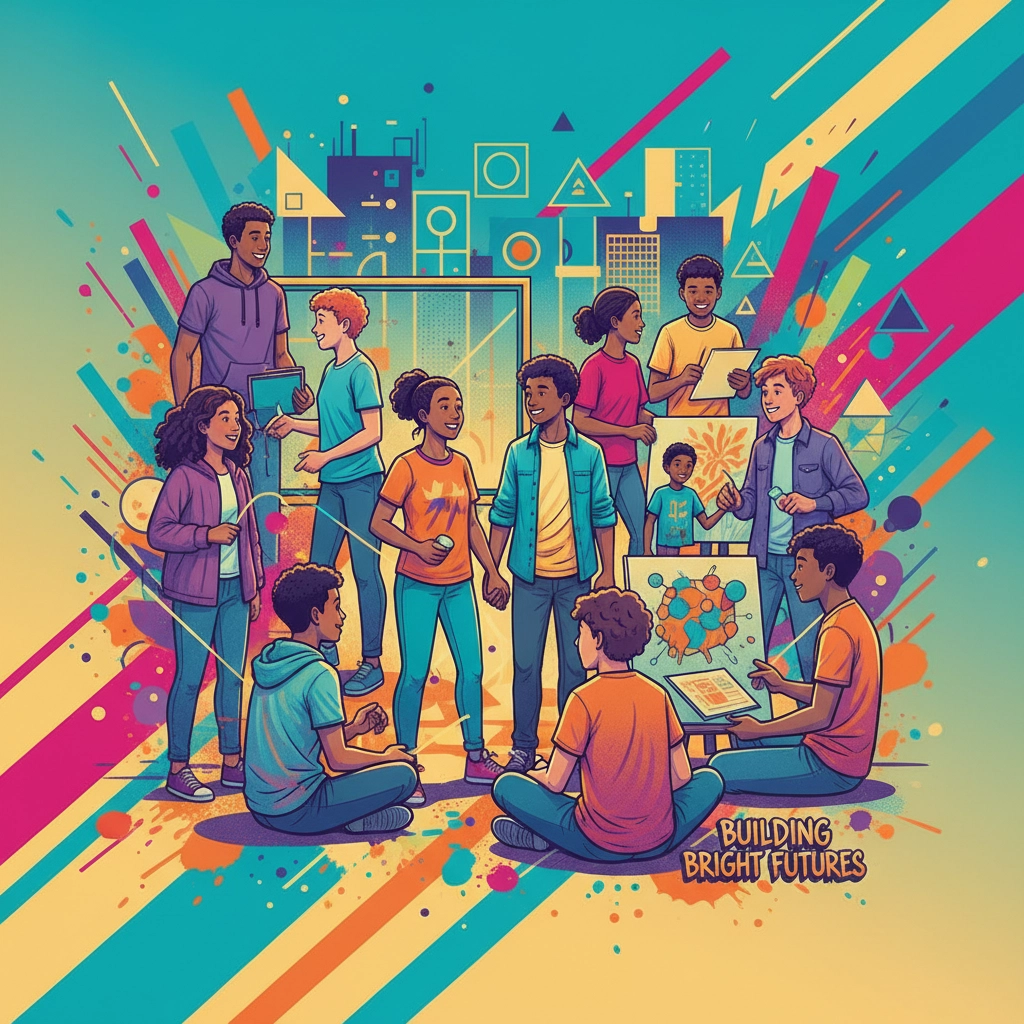Empowering Youth in Chicago: Real Stories; Proven Strategies from Underserved Communities
- alpeshp1
- Oct 13
- 4 min read
When people talk about Chicago's youth, the conversation often starts with problems. But here's what those headlines miss: our city is home to some of the most innovative, effective youth empowerment programs in the country. These aren't just feel-good initiatives: they're evidence-based strategies that are literally saving lives and transforming entire communities.
Let's dig into the real stories and proven approaches that are making a difference right here in Chicago's underserved neighborhoods.
The Programs That Actually Work
You know what's beautiful about Chicago? We don't just talk about change: we measure it. Take the Becoming a Man (BAM) program by Youth Guidance. This isn't your typical after-school program. Since 2001, they've been working with young men in grades 7-10, and the results speak for themselves.

The University of Chicago's Urban Labs conducted rigorous research with 2,740 students across 18 public schools. The findings? BAM cut violent-crime arrests among participants in half and boosted high school graduation rates by nearly 20%. That's not just a statistic: that's thousands of young lives redirected toward success.
"We believe that violence is a symptom of not systemically supporting boys and young men of Color," explains Chris Goins, former My Brother's Keeper Impact Community Lead. "By addressing the underlying conditions that prevent boys and young men of color from achieving their dreams is implicitly a violence prevention strategy."
What makes BAM different? It's all about developing those crucial life skills that don't show up on report cards. Through mentoring, role-playing, and group exercises, participants practice impulse control and emotional self-regulation. The program centers around six core values: integrity, accountability, positive anger expression, self-determination, respect for womanhood, and visionary goal-setting.
Getting to the Root of the Problem
Chicago CRED's Youth Program takes a different but equally powerful approach. Their motto says it all: "We do whatever it takes to keep our young people safe and on track." And they mean it.

CRED works with dozens of teens who meet twice weekly after school, focusing on what they call "cutting off the pipeline into street life." This isn't about quick fixes: it's about comprehensive support that includes outreach, life coaching, therapy, and employment and education support.
What sets CRED apart is their trauma-informed approach. Participants learn financial literacy and stress management while working with clinicians to process trauma through restorative justice programs. But here's the kicker: they work with entire families. Staff provide family therapy and support for housing and drug treatment needs because they understand that you can't empower youth in isolation.
Jayla Rufus, Manager of Youth Engagement at CRED, puts it simply: this work requires going above and beyond traditional program boundaries. It's about meeting families where they are and providing whatever support they need to succeed.
The Power of Comprehensive Programming
Chicago Lights has been at this for 60 years, and their approach shows the power of thinking big. Since 1964, they've served over 50,000 people and currently work with 4,000+ individuals annually. Their philosophy? "Everyone deserves a bright future."

Their programming spans mentoring, academic support, career development, and arts education. This holistic model recognizes that young people need multiple types of support to thrive: not just tutoring or job training, but comprehensive development that addresses their whole life.
UCAN Chicago focuses specifically on leadership development through their Community Anchor Organizations program. They operate in 15 Community Strategy Regions: areas that were hit hardest by the COVID-19 pandemic. Their approach involves convening community stakeholders including youth workers, faith leaders, and school staff to create strategies that connect young people to meaningful out-of-school programming.
When Organizations Work Together, Magic Happens
Here's where Chicago's youth empowerment efforts really shine: collaboration. Thrive Chicago serves as the backbone organization bringing together 600 individuals representing nearly 200 child and youth-serving organizations under a unified "cradle-to-career" agenda.
Think about that for a second: 200 organizations working together with a shared vision. That's not just coordination; that's a movement.
This collaborative has generated nearly $1.1 million since January 2020 just to expand BAM's reach and develop comprehensive action plans. When organizations share resources, knowledge, and strategies, their individual impact multiplies exponentially.
What Makes These Strategies Actually Work
So what's the secret sauce? After looking at all these successful programs, a few key ingredients keep showing up:
Relationship-building is everything. Phillip Cusic, Senior Director of BAM, emphasizes their use of "social and emotional learning and support, using group practices, rites of passage, as well as group therapy and individual counseling." These programs succeed because they prioritize authentic connections between staff and participants.
Trauma-informed care isn't optional. Every successful program recognizes that many young people in underserved communities have experienced trauma. Effective interventions address this head-on rather than pretending it doesn't exist.
Family engagement matters. The most effective programs work with entire families, not just individual youth. When families are supported, young people have a stronger foundation for success.
Community collaboration amplifies impact. No single organization can solve complex community challenges alone. The programs making the biggest difference are those that work together strategically.
Real Impact, Real Lives
The data tells an incredible story, but behind every statistic is a real person whose life trajectory changed. More than 95% of the 12,000+ students served annually by Youth Guidance identify as African-American and Hispanic/Latino: young people from the communities that need these resources most.
These aren't just programs keeping kids busy after school. They're comprehensive interventions that address the root causes of violence and provide pathways to success. They're creating leaders, college graduates, entrepreneurs, and community advocates.
Your Role in This Movement
Here at True Believers Community Connections, we see firsthand how community-based programs can transform lives. The strategies working across Chicago: trauma-informed care, family engagement, comprehensive support, and collaborative approaches: are the same principles we apply in our work.
The truth is, empowering youth requires all of us. Whether you're a parent looking for resources, a community member wanting to get involved, or an organization seeking to collaborate, there's a place for you in this movement.
These proven strategies work because they're built on a simple but powerful belief: every young person has the potential to succeed when given the right support, opportunities, and relationships. In Chicago's underserved communities, that belief is becoming reality every single day.
Ready to be part of the solution? Check out our programs and see how you can help empower the next generation of Chicago leaders. Together, we're not just changing individual lives; we're transforming entire communities.



Comments